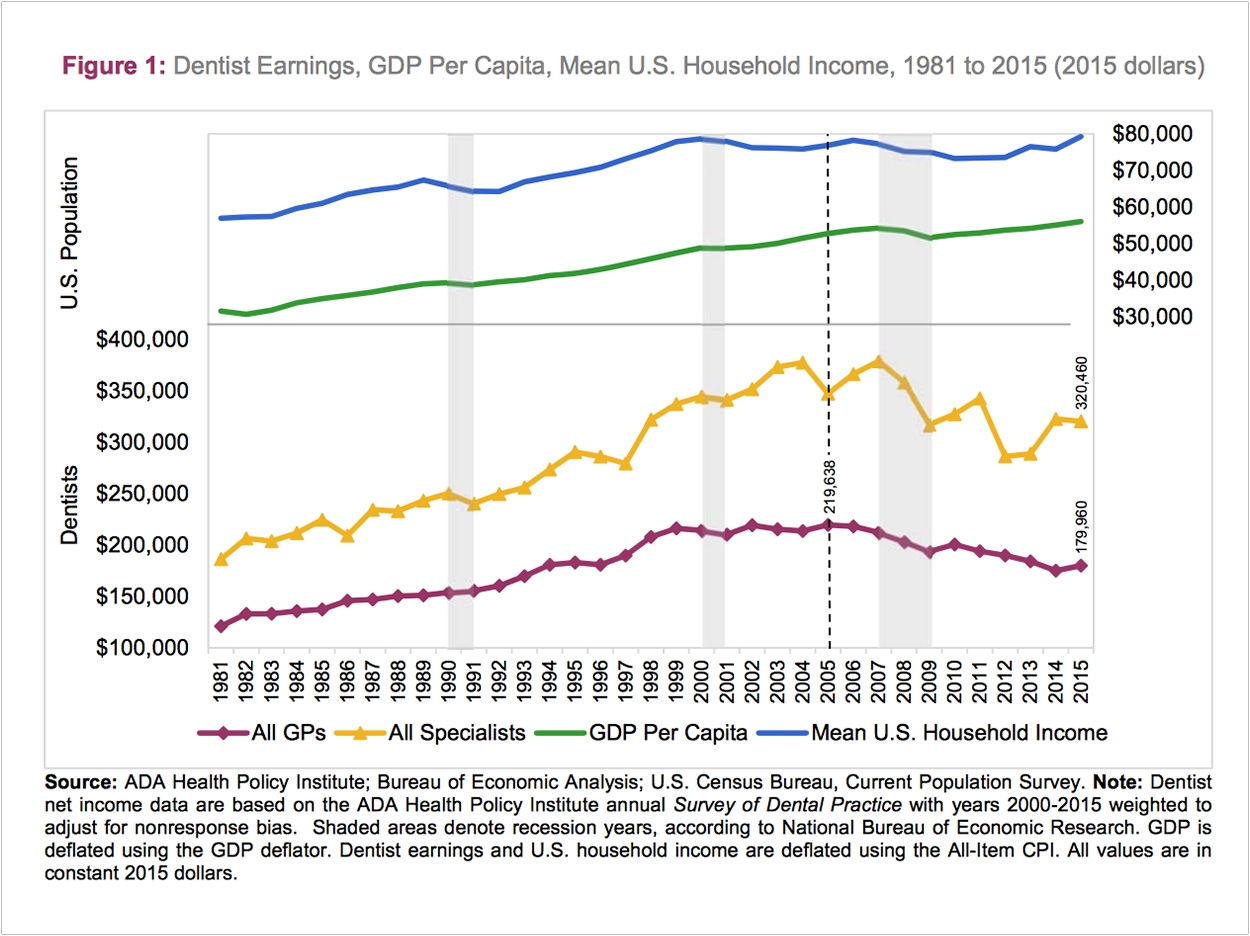
While dentistry has always been a lucrative profession, times took a turn for the worse with the Great Recession of 2007 through 2009, and earnings tumbled. But incomes have stabilized after 6 years, according to the ADA Health Policy Institute (HPI), though dentists should prepare for a new normal.
The HPI reports that the average net income was $179,960 for general practitioner (GP) dentists and $320,460 for specialists in 2015. Also, the average annual net income was $195,200 for owner GPs and $132,370 for nonowner GPs last year. Adjusted for inflation, average net income has decreased significantly for GPs since the 2005 peak value of $219,638. Net incomes for specialists are down from their 2007 peak as well.
The HPI attributes the earlier declines to a drop in demand for dental care and aggregate dental spending. Plus, payment rates to dentists through private dental plans have declined during the previous 10-year period. And, the increase in the number of dentists has affected earnings. Yet the HPI believes that a turnaround, or at least a bottoming out, of these trends is underway.
The percentage of GPs who described themselves as “not busy enough” decreased from 34% in 2014 to 27% in 2015, which the HPI called statistically significant. The percentage of specialists who described themselves as “not busy enough” only decreased from 31% in 2014 to 30% in 2015, which the HPI did not consider statistically significant.
Increases in patient wait times also are turning around, averaging 9.6 days for a GP appointment in 2001, 4.5 days in 2012, and 5.3 days in 2015, which the HPI considered statistically significant. Patient volume is up as well in 2015 compared to 2014 for 33% of GPs and 40% of specialists, though 25% of GPs and specialists reported that it was down.
The HPI is careful to note uncertainty in the general healthcare environment and in the economy. The organization does not expect dental spending in the United States to return to its historically high, pre-Great Recession levels. Many of the proposed reforms to the Affordable Care Act also will decrease demand for dental care, the HPI says, with an unclear impact on dentist net incomes from the potential influx of Medicaid patients. Plus, the supply of dentists will continue to increase.
The HPI based its findings on data from its Survey of Dental Practice, conducted annually on a nationally representative random sample of 4,000 to 17,000 dentists in private practice. According to its most recent data, 90.4% of active dentists in the United States are in private practice. Specialists were oversampled to ensure an adequate number of responses for statistical analysis, and estimates were weighted appropriately to compensate.
Related Articles
General Practitioner Earnings Continued to Fall in 2014
Dentistry Faces a New Economic Climate
How to Recruit and Hire Great Dental Employees












